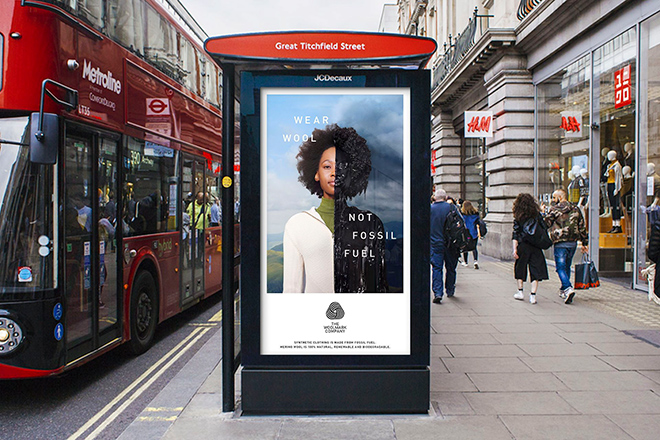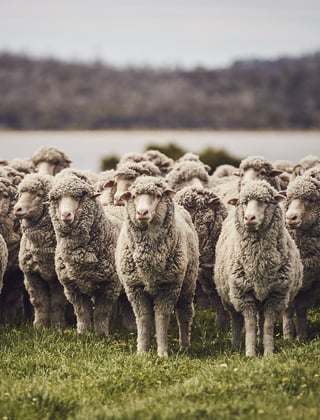‘Wear Wool, Not Fossil Fuel’ Eco campaign update

AWI’s marketing arm The Woolmark Company in September launched a powerful marketing campaign highlighting to consumers that synthetic fibres are made from oil, whereas wool is a 100% natural, renewable and biodegradable fibre. The global campaign urges consumers to consider the fibre composition of a clothing product – and choose wool – when they are thinking of making a purchase.
AWI’s marketing arm The Woolmark Company in September launched a powerful marketing campaign highlighting to consumers that synthetic fibres are made from oil, whereas wool is a 100% natural, renewable and biodegradable fibre. The global campaign urges consumers to consider the fibre composition of a clothing product – and choose wool – when they are thinking of making a purchase.
|
INTERIM RESULTS (so far, by the start of November) 68.6 million video views 123.4 million impressions 651 earned media clippings 193 million earned media reach |
The Woolmark Company’s environmentally focused global campaign ‘Wear Wool, Not Fossil Fuel’ aims to educate the public about the harmful impact of synthetic fibres on the environment, and that choosing a natural fibre such as wool can help reduce the fashion industry’s environmental footprint on the planet.
Featuring a series of powerful visual messages that highlight the link between fabrics made from synthetic fibres and the crude oil used in its manufacture, the campaign centres around a 60-second hero film and includes outdoor advertising which has so far been launched in the UK, US and France.
The impactful minute-long film shows people struggling to escape an oil-filled swimming pool, which is a dramatic visual based on the insight that every 25 minutes an Olympic pool’s worth of crude oil is used to produce synthetic clothing (which amounts to almost 350 million barrels a year).
Next in the video, the people – smothered and dripping in oil – climb out of the pool and realise “it’s time to change”. They strip off their ‘oil clothes’ revealing them each now dressed in beautiful pure wool garments. The people then wander with freedom through forests, streams and meadows – a natural paradise – which emphasises the natural attributes of the wool they are now wearing. On-screen descriptions of wool being ‘100% natural’, ‘100% biodegradable’ and ‘100% renewable’ reinforce the campaign message.

The campaign, which is being promoted via digital and social media, was accompanied in September by visually striking 3D digital advertising in iconic sites in London’s Piccadilly Circus and New York’s Times Square, along with other global outdoor advertising (such as on bus shelters and newsstands), plus a partnership with like-minded companies such as popular computer file transfer company WeTransfer.
More information: www.woolmark.com/wear-wool

Why wool has less impact than synthetics
- Renewable – Every year, sheep produce a new fleece, making wool a completely renewable fibre source. In contrast, synthetic fibres are derived from non-renewable petrochemicals and fossil fuels, which when extracted de-sequester carbon stored millions of years ago.
- Kept in use longer – How often clothes are worn is the most influential factor in determining environmental impacts from clothing. Wool garments are on average kept in use for longer periods of time than garments made from other fibre types.
- Less washing – Research shows that consumers wash wool clothing less frequently than other fibre types, saving water, energy and detergent associated with laundering.
- Reusable and recyclable – Wool’s attributes are so highly valued that, even after a garment has finished its long service life with one person, the fibre is still suitable to be kept in use by another. Wool is the most reused and recycled fibre on the planet of the major apparel fibres.
- Biodegradable – Wool is made of a 100% natural biodegradable protein. In contrast, synthetic fibres do not biodegrade but instead accumulate in landfill and release microplastics in our oceans or on our land.
This article appeared in the December 2022 edition of AWI’s Beyond the Bale magazine. Reproduction of the article is encouraged.














